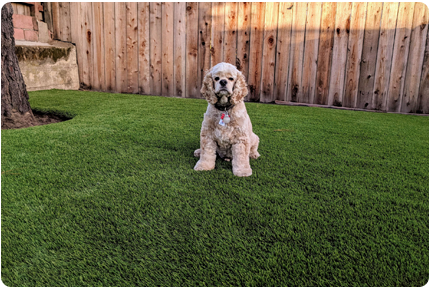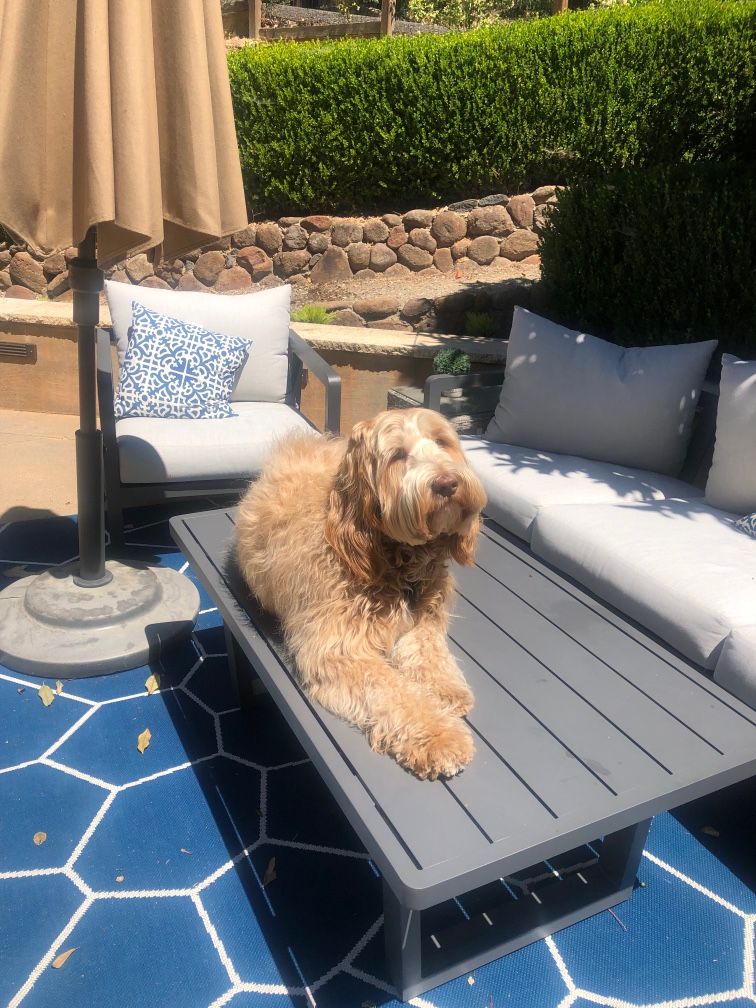Effective Solutions to Resolving Unpleasant Dog Urine Odor on Your Artificial Turf
A lot of people who have installed synthetic grass lawns often express their appreciation for the minimal upkeep required by their artificial turf. However, for those who share their space with a canine companion, occasional tender loving care becomes necessary to address a common issue related to dog owners and their turf.
This particular matter pertains to the unpleasant odor that arises when artificial turf comes into contact with dog urine. It’s well-known that artificial turf is designed to accommodate pets effectively and is equally significant for the well-being of pet owners. By selecting synthetic turf along with a secure and non-toxic infill material for your lawn or dog park, you can be assured that your outdoor space will maintain its lush green appearance, regardless of the frequency of bathroom breaks your furry friend takes.
For pet owners, artificial turf alleviates most worries, except for instances when undesirable odors emerge. Such foul smells can mar the enjoyment of the outdoor area you’ve invested considerable time, money, and effort in creating. Consequently, this could result in decreased outdoor leisure for both you and your canine companion.
In the ensuing sections, we delve into the reasons behind the potential odor issue caused by dog urine on turf, offer remedies to address the situation if it occurs, and provide insights into preventive measures for the future.

WHAT IS RESPONSIBLE FOR THE DOG URINE ODOR ON MY ARTIFICIAL TURF?
In brief: urea.
Urea is a byproduct generated by the breakdown of amino acids within the body, whether in humans or canines. These acids transform into ammonia and carbon dioxide during metabolism. Notably, excessive accumulation of ammonia within the body can be highly detrimental. To mitigate the harm posed by these toxic derivatives, the body converts them into urea, facilitating their safe passage through the bloodstream and kidneys for eventual elimination as urine.
WHAT HAPPENS TO ARTIFICIAL TURF WHEN DOGS URINATE?
Regrettably, once expelled from the body, that’s when the situation begins to get a little stinky. Over time, the residue of urine will gradually release ammonia into the surrounding air, directly contributing to the unpleasant odor. While artificial turf is engineered for superior drainage compared to natural grass, when a dog repeatedly uses the same area of turf as their restroom, the urine rich in urea can accumulate within the individual layers of the turf.
The choice of a high-quality synthetic turf infill plays a pivotal role in thwarting the accumulation of odors. However, not all infills are crafted alike. For instance, untreated sand, a prevalent infill in turf landscaping, can actually exacerbate urine-related odors. This is due to sand’s tendency to ensnare urine, impeding its swift passage through the turf system. Opting for an infill that optimizes your turf’s drainage capabilities is essential, along with one that combats the growth of odor-triggering organic matter and bacteria.
HOW TO QUICKLY ELIMINATE DOG URINE ODOR FROM ARTIFICIAL GRASS
Prevention, or more accurately, effective management, serves as the ultimate solution. Thus, ensure your dog is well-trained and you maintain consistent turf care. Nevertheless, accidents can still happen. If you require a quick solution, follow these immediate steps:
Clear away solid waste
Prioritize the removal of any solid waste present on the grass to prevent further contamination.
Hose down the area
Utilize a garden hose to thoroughly rinse the affected area, effectively flushing out any residual urine or feces lodged between the grass blades.
Apply a vinegar solution or enzyme-based cleaner
Create a mixture by combining equal parts of vinegar and water. Spritz this solution onto the impacted regions for an eco-friendly, natural disinfectant and deodorizer. For a more potent alternative, consider employing an enzyme-based cleaner. These cleaners contain live bacteria and enzymes that disintegrate the source of ammonia odors.
Allow the solution to rest
To neutralize the odor, allow the solution to sit on the grass for approximately five to ten minutes. If using an alternative cleaner, adhere to the instructions provided on the container.
Rinse thoroughly
After the solution has effectively worked, thoroughly rinse the area with water.
Use a turf deodorizer (optional)
Should the odor persist post-cleaning, sprinkle a natural turf deodorizer, such as baking soda, onto the affected zone. Allow it to rest for around 20 minutes before sweeping or vacuuming. Baking soda proves highly effective in eliminating even the most stubborn odors – including those stemming from your furry friend’s urine.

FAQS: IMPORTANT CONSIDERATIONS FOR DEALING WITH DOG URINE ODOR ON YOUR ARTIFICIAL TURF
How often should I clean artificial grass from dog urine? Generally, once a week or every other week is advisable.
Can dogs urinate and defecate on synthetic grass? Yes, pets can both urinate and defecate on artificial grass. The waste remains on the surface and doesn’t penetrate the ground, simplifying cleanup compared to natural grass.
Does artificial turf contain harmful substances for dogs? No, newer types of artificial turf typically use non-toxic infill materials. However, older versions with materials like crumb rubber could contain harmful chemicals.
Can dog urine damage synthetic grass? Dog urine itself doesn’t typically damage artificial grass. Nonetheless, if not cleaned properly, it can lead to lingering odors. Regular maintenance is essential to prevent this.
How should I maintain my artificial turf? Here are effective maintenance practices for your synthetic turf:
Frequent Grooming of Infill and Turf: Regularly rake the artificial turf to keep it upright and ensure the infill is evenly distributed, ensuring both visual appeal and stability. Utilize nylon or polypropylene bristles and attachments other than metal fibers. High-traffic areas might necessitate occasional infill replenishment to maintain turf support.
Periodic Surface Disinfection: Periodically disinfect the surface. Sprinkle baking soda, especially in problematic areas, to neutralize odors and stains. After around 20 minutes, sweep or vacuum to remove the baking soda along with impurities.
Timely Seam Repairs: Address damaged seams promptly to prevent further deterioration or potential hazards. Your installation warranty should offer seam repair coverage within a specified timeframe.
Regular Stain and Debris Removal: For stubborn stains, utilize approved cleaners. Avoid items like gum and sunflower seeds on the turf, and consult your turf provider for tailored advice, as different turf types may have specific requirements.
To learn more about pet-friendly artificial turf contact OneLawn today.

